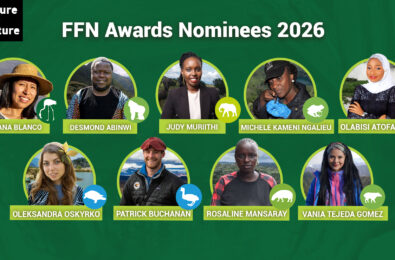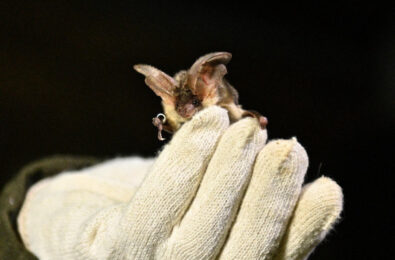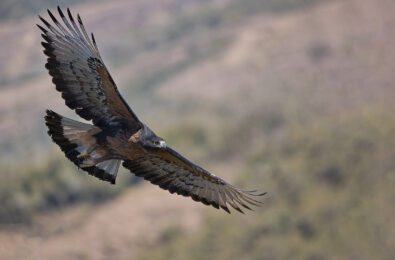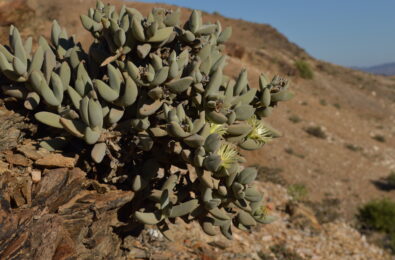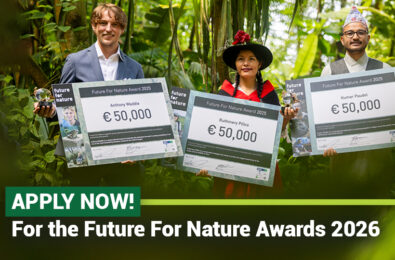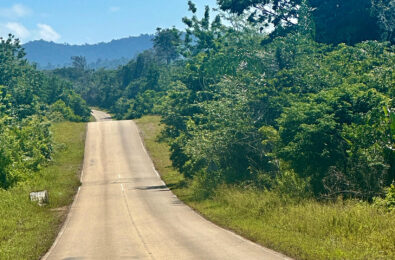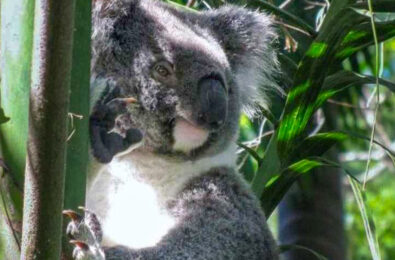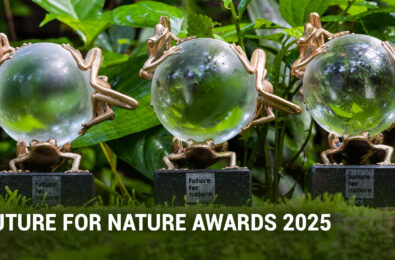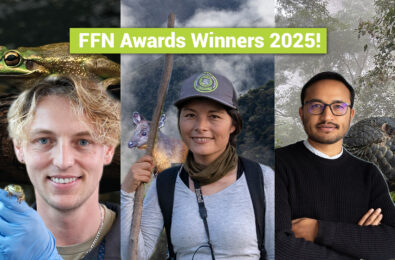Update From the Field: A Year of Remarkable Achievements in Raptor Conservation
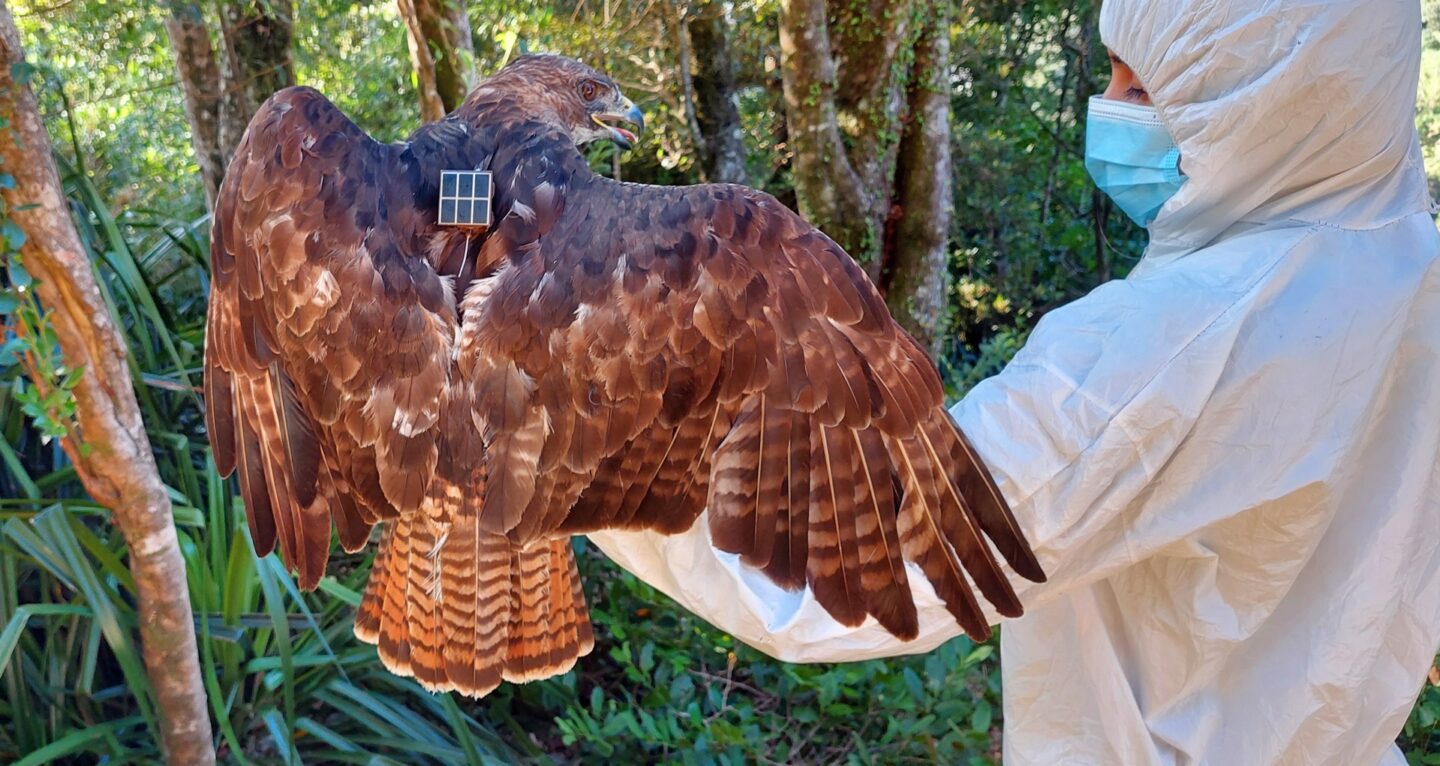
Rufous-tailed Hawk adult female tagged with GPS/GSM logger. Photo: Tomás Rivas Fuenzalida
Tomás Rivas Fuenzalida shares with us how winning the Future For Nature Award in April 2023 has helped him and his team achieve a series of successes in raptor conservation in the past year.
Tomás co-founded Fundación Ñankulafkén with the aim to set up long-term and large-scale conservation efforts for the Rufous-tailed Hawk (and other threatened South American raptors, such as the Black-and-chestnut Eagle) through scientific research, environmental education, and providing coexistence solutions.
Unveiling the Mysteries of Chile’s Raptors
In an ambitious fieldwork expedition from January to May 2024, Tomás and his team embarked on a journey across central and southern Chile. Covering 15,000 km by land and 760 km by air, they focused on the elusive Rufous-tailed Hawks. For the first time, they successfully tagged 19 individuals (10 adults and 9 juveniles) with GPS/GSM loggers.
Groundbreaking Findings for Conservation
This pioneering work is pivotal for the species’ conservation planning. By tracking these hawks, they can now evaluate their habitat use, annual movements, population connectivity, and potential threats. Preliminary results have already revealed broader home ranges than previously thought and identified crucial inter-regional areas for juvenile dispersal. This data is instrumental in developing a National Conservation Plan for the Rufous-tailed Hawk. The team also received support of IBCP in the second half of this project.

Summer and autumn movements of an adult female Rufous-tailed Hawk tagged with GPS/GSM logger. Image via Tomás Rivas Fuenzalida
Insight into Dietary Habits
During their field visits, Tomás and his colleagues also installed and monitored camera traps at active nests. These traps have provided invaluable insights into the dietary habits and behaviour of the Rufous-tailed Hawks, further informing the team’s conservation strategies.
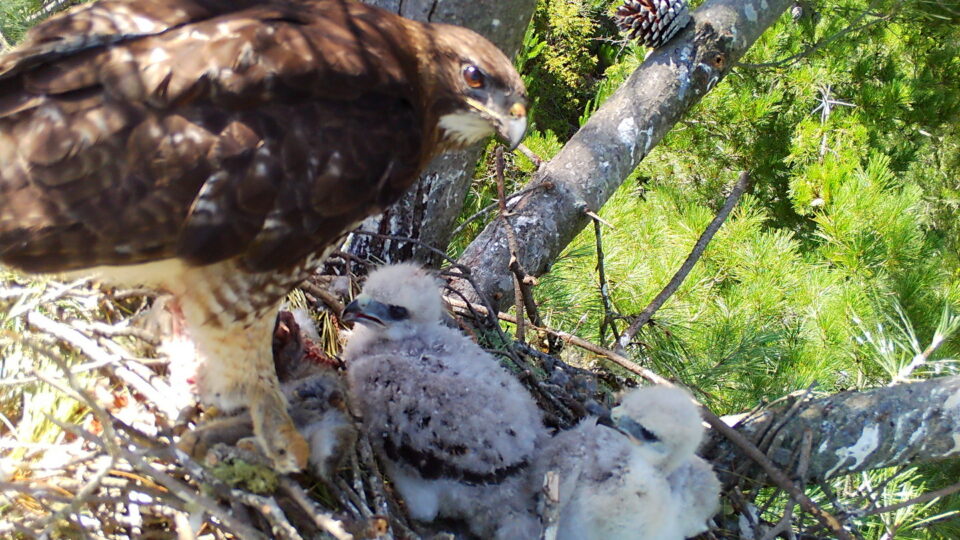
Rufous-tailed Hawk adult female with chicks. Photo: Tomás Rivas Fuenzalida (camera trap at active nest)
A Major Breakthrough in White-throated Hawk Migration Studies
Between mid-March and mid-April 2024, the team conducted their second migratory count for the White-throated Hawk in the Andean foothills of central Chile. Having identified a major migratory bottleneck for the species in 2022, they completed their first full autumn migration count in 2023. This year, they counted an astonishing 6,800 White-throated Hawks, cementing this site as the most significant for migratory raptors in the Austral-Neotropical system.
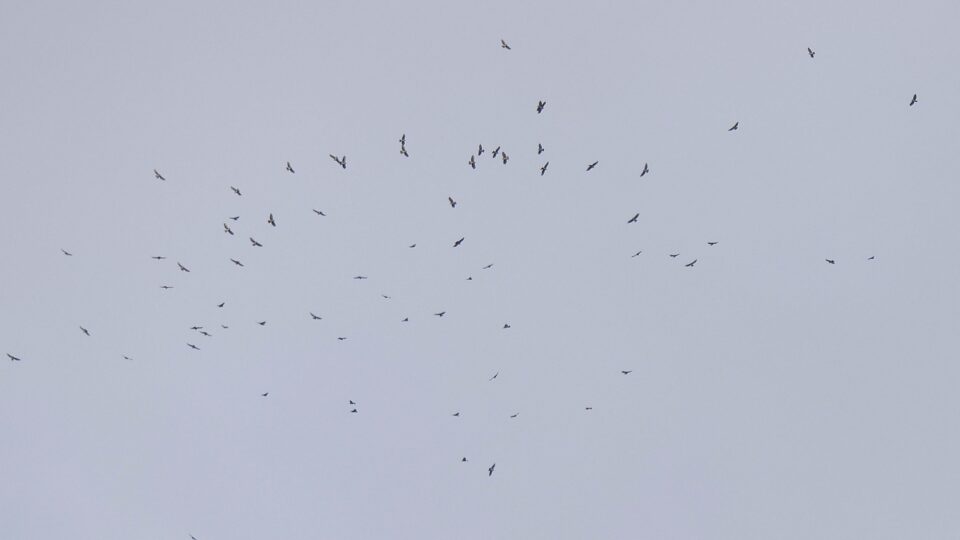
A White-throated Hawk flock migrating in central Chile. Photo: Tomás Rivas Fuenzalida
Long-term Monitoring and Local Engagement
These findings highlight the importance of this migratory route, with previous counts at other sites not exceeding 300 hawks per season. Tomás and his team are now in discussions with local companies to establish long-term monitoring programs for the White-throated Hawk, a critical bioindicator of the health of the southern temperate forests ecoregion.
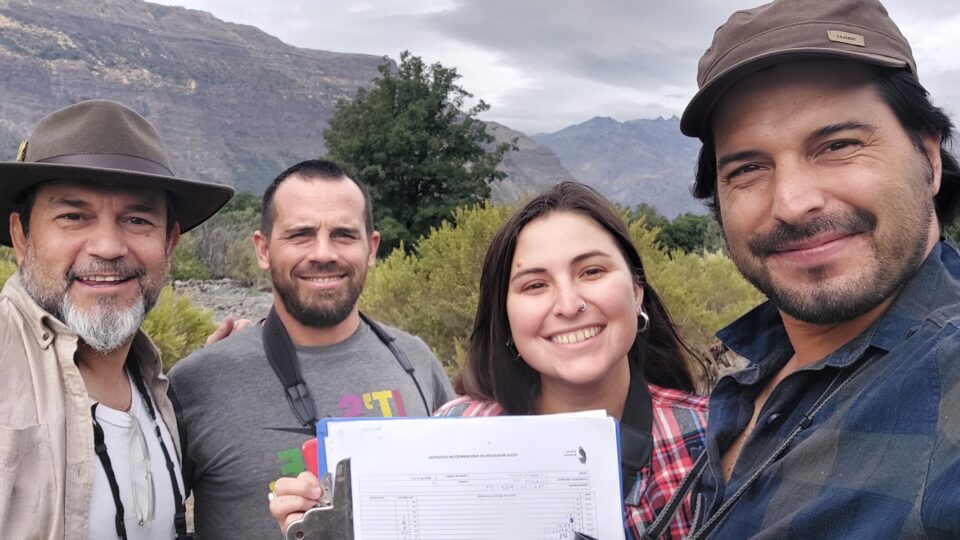
White-throated Hawk count field trip. Photo: Tomás Rivas Fuenzalida (right in photo)

White-throated Hawk count. Photo: Tomás Rivas Fuenzalida
Expanding Their Reach: Peru’s Black-and-chestnut Eagle
Despite limited resources, Tomás and his colleagues achieved significant milestones in Peru. They tagged a young Black-and-chestnut Eagle with a GPS/GSM device, marking a first for Peru. This initiative lays the groundwork for understanding the species’ habitat use and requirements. Additionally, they installed a camera trap at an active nest and provided educational materials to rural communities living alongside these majestic eagles. They are also preparing to publish a scientific article detailing the species’ diet.

Young Black-and-chestnut Eagle. Photo: Tomás Rivas Fuenzalida
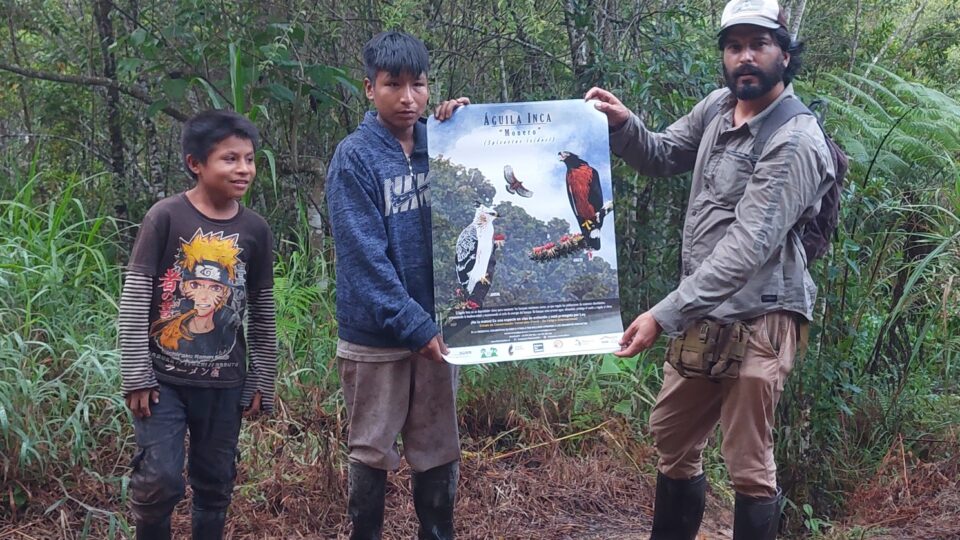
Community outreach (Tomás Rivas Fuenzalida on the right). Photo: Katherine Burgos
Enhancing Their Capabilities with New Equipment
To support their extensive fieldwork, the team acquired essential equipment, including:
- A 4×4 vehicle with a roof tent for extended expeditions in Chile.
- A pair of 18×50 long-range binoculars with image stabilizers, significantly enhancing their ability to identify raptors from up to 5 km away.
- A new mirrorless camera for capturing high-quality slow-motion 4K footage, aiding their social media, documentary projects, and fundraising campaigns.
- A complete climbing equipment to access raptor nests in Peru.
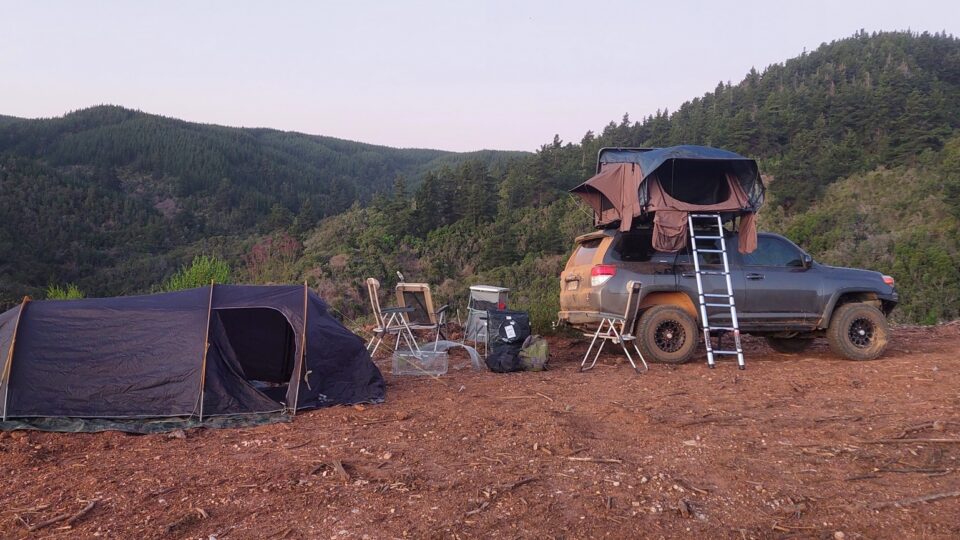
Fieldwork expedition camp in central Chile. Photo: Tomás Rivas Fuenzalida
Ongoing Research in Peru: Orange-breasted Falcon and Black-and-white Hawk Eagle
Their work continues with two other forest raptor species in Peru, in collaboration with the Wolf Creek Operation Foundation: the Orange-breasted Falcon and the Black-and-white Hawk Eagle, their primary predator. By monitoring these elusive and threatened raptors, they aim to compare their population dynamics and threats with those of Central American populations, which have experienced significant declines in recent decades.
The team’s efforts over the past year have yielded ground-breaking insights and established new benchmarks in raptor conservation. With continued support and collaboration, they are committed to protecting these magnificent birds and their habitats for future generations.
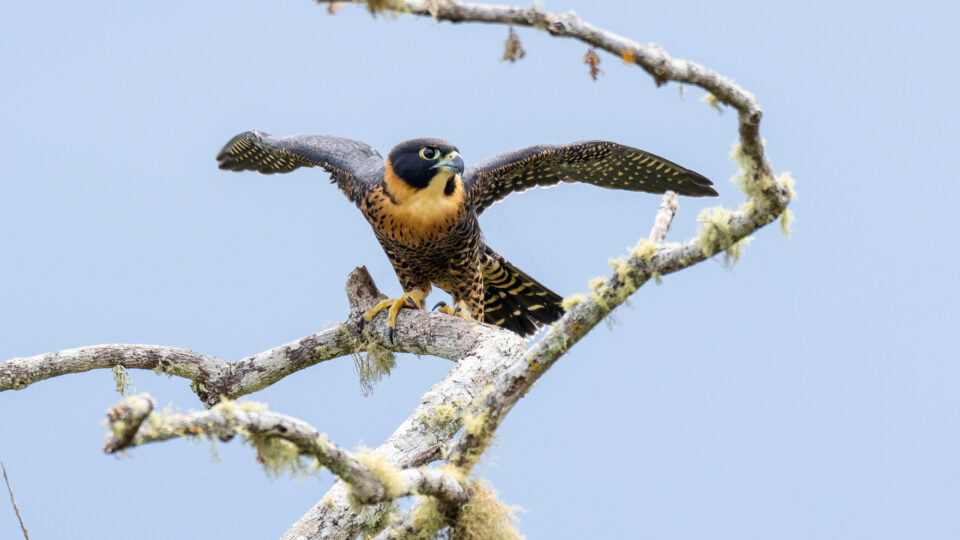
Juvenile Orange-breasted Falcon. Photo: Tomás Rivas Fuenzalida
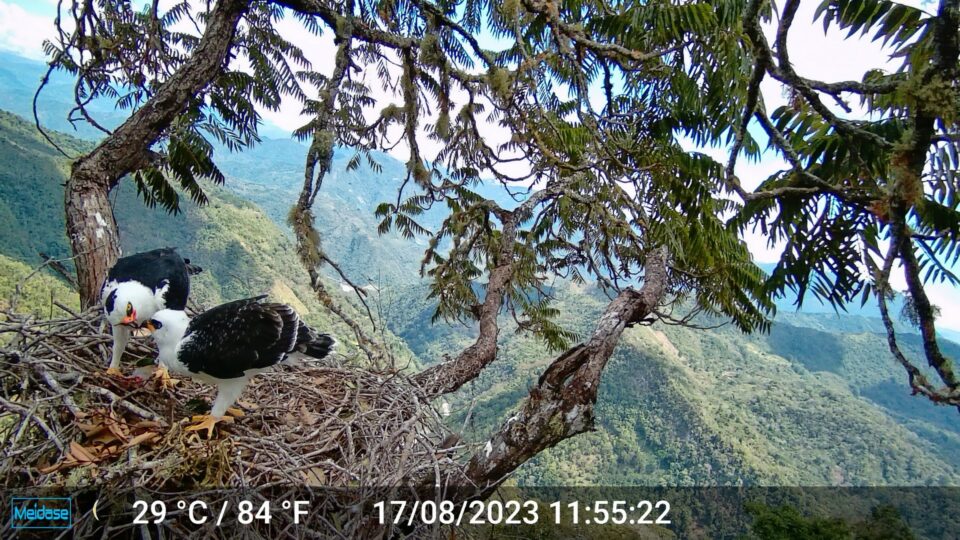
Black-and-white Hawk-Eagle female with chick. Photo: Tomás Rivas Fuenzalida (camera at active nest)
Future For Nature (FFN) works to create a global network of outstanding nature conservationists. The network is growing, with three new FFN Award winners joining the FFN Family (of currently 51 conservationists) each year. To increase the support from the Future For Nature Foundation to the growing family of winners, all previous FFN Award winners are eligible to apply for FFN Family funding for specific types of projects aimed at strengthening collaborations across the network.
Support Future For Nature by making a donation or become a FFN Friend!
Your donation contributes to true effective and efficient nature conservation and environmental protection by investing in Future For Nature’s (FFN) network of winners. Your contribution boosts the impact of these conservationists on the future of nature, making your investment meaningful. Make a donation
You can also support us by becoming a Future For Nature Friend. Find out more. Your support is invaluable for the future of nature!






